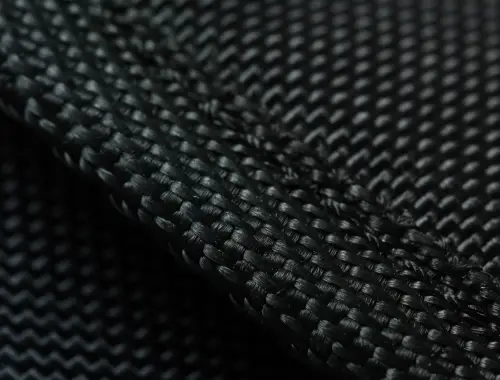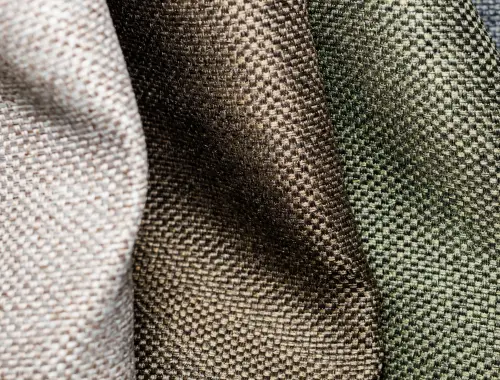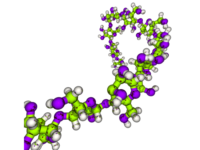
Nylon and polyester are two synthetic polymers that have revolutionized the textile industry. Despite their distinct chemical compositions, these materials share several similarities that contribute to their widespread use in various applications. Understanding these commonalities can provide valuable insights into their versatile properties.

Polymer Composition:
- Both nylon and polyester belong to the family of synthetic polymers, composed of long chains of repeating units. Nylon is a polyamide, while polyester is a polymer made from esters of dihydric alcohols and terephthalic acid.
Strength and Durability:
- Nylon and polyester are renowned for their high tensile strength, making them ideal choices for products requiring resilience and durability, such as fabrics and ropes.
Resistance to Moisture:
- Both materials exhibit low moisture absorption rates, contributing to their suitability for outdoor applications and water-resistant products.
Chemical Stability:
- Nylon and polyester are chemically stable, resisting degradation from exposure to sunlight, chemicals, and general environmental factors.
Elasticity and Flexibility:
- Despite being strong and rigid, both materials can be engineered to possess elasticity and flexibility, offering versatility in various industries, including fashion and sports.
This table provides a quick overview of the shared characteristics between nylon and polyester, emphasizing their versatility and applicability in various industries.
| Property | Nylon | Polyester |
|---|---|---|
| Polymer Composition | Polyamide | Polymer from esters of dihydric alcohols and terephthalic acid |
| Strength and Durability | High tensile strength, resilient | High tensile strength, durable |
| Resistance to Moisture | Low moisture absorption | Low moisture absorption |
| Chemical Stability | Chemically stable, resistant to degradation | Chemically stable, resistant to degradation |
| Elasticity and Flexibility | Can be engineered for elasticity and flexibility | Can be engineered for elasticity and flexibility |
| Common Applications | Fabrics, ropes, carpets, parachutes | Fabrics, clothing, upholstery, bottles |
The similarities between nylon and polyester extend beyond their synthetic origins. From their polymer composition to shared physical properties like strength, durability, resistance to moisture, chemical stability, and elasticity, these materials have become indispensable in a wide array of applications. Understanding these commonalities not only enhances our appreciation for their versatility but also opens doors to innovative uses in the ever-evolving landscape of materials science.
Q: What is the primary similarity between nylon and polyester?
A: The primary similarity between nylon and polyester lies in their synthetic polymer composition. Both materials are created from long chains of repeating units, though they belong to different polymer families.
Q: Are nylon and polyester equally resistant to moisture?
A: Yes, both nylon and polyester exhibit low moisture absorption rates, making them suitable for applications requiring resistance to water and outdoor exposure.
Q: Do nylon and polyester share similar strengths and durability?
A: Absolutely. Nylon and polyester are renowned for their high tensile strength, providing resilience and durability. This characteristic makes them popular choices for products like fabrics, ropes, and other items requiring strength.
Q: Are nylon and polyester chemically stable?
A: Yes, both materials are chemically stable, resisting degradation from exposure to sunlight, chemicals, and general environmental factors.
Q: Can nylon and polyester be engineered for elasticity and flexibility?
A: Indeed, both nylon and polyester can be engineered to possess elasticity and flexibility, offering versatility in applications such as fashion and sports.
Q: What are some common applications of nylon and polyester?
A: Nylon finds applications in fabrics, ropes, carpets, and parachutes, while polyester is commonly used in fabrics, clothing, upholstery, and even in the production of bottles.
Q: Are there differences between nylon and polyester despite their similarities?
A: Yes, there are notable differences in their chemical structures, manufacturing processes, and some specific properties. While they share many similarities, these differences contribute to their distinct applications in various industries.
Q: Can nylon and polyester withstand exposure to sunlight and chemicals?
A: Yes, both nylon and polyester are resistant to degradation from exposure to sunlight and various chemicals. This property makes them suitable for outdoor applications and products that may come into contact with different substances.
Q: Are nylon and polyester environmentally friendly?
A: Both materials are synthetic and not biodegradable, which can raise environmental concerns. However, efforts are being made to recycle nylon and polyester products to minimize their impact on the environment.
Q: Do nylon and polyester require special care in terms of maintenance?
A: Generally, both nylon and polyester are low-maintenance materials. They are resistant to wrinkles and can often be machine-washed. However, specific care instructions may vary depending on the end product and its intended use.
Q: Can nylon and polyester be used interchangeably in certain applications?
A: In some cases, nylon and polyester can be used interchangeably, especially in textile applications. However, their unique properties may make one more suitable than the other for specific uses, depending on factors such as strength, elasticity, and moisture resistance.
Q: Are there variations of nylon and polyester with enhanced properties?
A: Yes, researchers and manufacturers often modify the chemical composition of nylon and polyester to create variations with enhanced properties. For example, high-performance nylon and polyester fibers are engineered for specific applications where increased strength or other specialized characteristics are required.
Q: How do the costs of nylon and polyester compare?
A: In general, polyester tends to be more cost-effective than nylon. This cost difference can influence the choice of material in various industries, particularly in mass-produced items where affordability is a key consideration.
Q: Can nylon and polyester be recycled?
A: Both nylon and polyester can be recycled, although the processes and availability of recycling options may vary. Recycling helps reduce the environmental impact of these materials and promotes sustainability in their production and use.
Q: Are there specific industries where nylon and polyester are preferred over natural fibers?
A: Yes, nylon and polyester are often preferred over natural fibers in industries that require specific properties such as high strength, durability, and resistance to moisture. This includes applications in outdoor gear, industrial products, and certain types of clothing.
Q: How do the melting points of nylon and polyester compare?
A: Polyester generally has a higher melting point compared to nylon. This higher melting point contributes to the heat resistance of polyester, making it suitable for applications where exposure to high temperatures is a consideration.
Q: Can nylon and polyester be dyed easily?
A: Both nylon and polyester can be dyed easily, and they are known for retaining color well. This property is essential in the textile industry, where vibrant and long-lasting colors are desired in fabrics and clothing.
Q: Do nylon and polyester share any environmental concerns?
A: While both materials are synthetic and not biodegradable, polyester production is associated with the use of petrochemicals. On the other hand, nylon production requires the extraction of raw materials from non-renewable sources. Efforts are ongoing to address these environmental concerns through recycling initiatives and sustainable production practices.
Q: Can nylon and polyester be blended together in manufacturing?
A: Yes, nylon and polyester can be blended together to create hybrid materials that combine the desirable properties of both. This blending process is often done to enhance specific characteristics, such as improving the moisture-wicking ability of fabrics.
Q: Are there advancements in the development of sustainable alternatives to nylon and polyester?
A: Yes, researchers are actively exploring sustainable alternatives to traditional nylon and polyester. This includes the development of bio-based polymers and recycled materials to reduce the environmental impact of synthetic textiles.











Leave a Reply